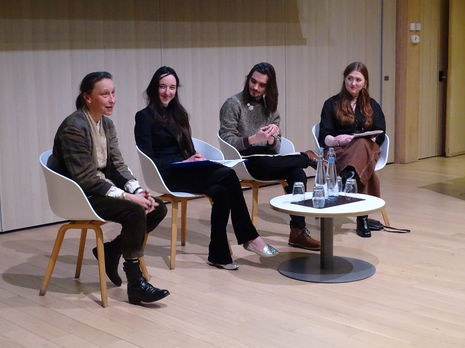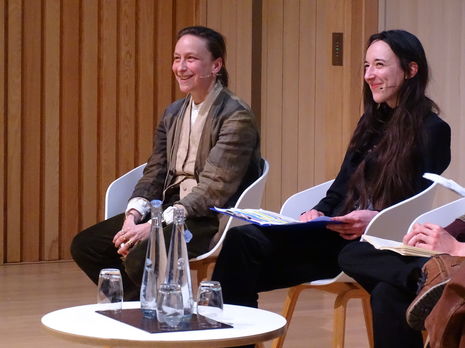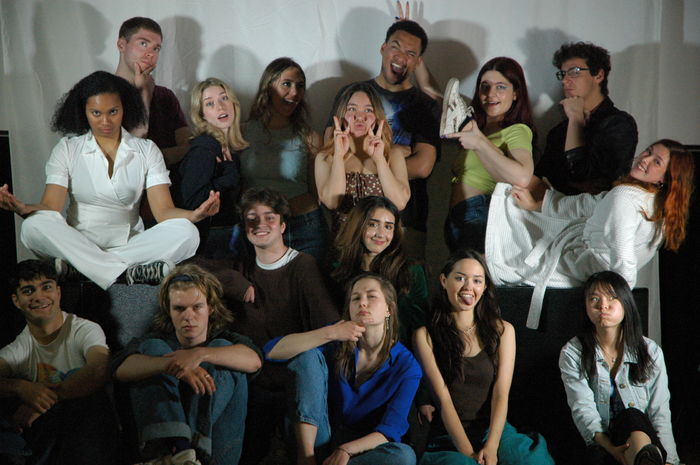‘Having an idea is the most beautiful feeling in life’: Céline Sciamma comes to Cambridge
In conversation with Cambridge Creatives and Film at Jesus, Sciamma talks us through her visual coming of age, her sources of inspiration, and why she’s drawn to the politics of the ‘gaze’

In Jesus College, at an event run by Cambridge Creatives in collaboration with Film at Jesus, lauded French auteur Céline Sciamma starts at the very beginning, describing the life-changing experience of making her first film, Water Lilies. “The first thing that happened to me when I directed was, I was terrified”, she says. Having trained as a screenwriter, she had never imagined taking on directorial roles: “I was discovering it all, but the big discovery was that I loved it. I realised this language is the language I want to make and speak, the language of cinema. And that’s how I became a director — by pretending I didn’t want to be one.”
“I hope I always will write everything as a coming of age because life means coming of age [...] now that I get older, I realise it doesn’t stop. Life is always about transformation.”
In Sciamma’s conscious and thoughtful use of words, she makes apparent her fierce love of visual language. A self-professed cinephile, she describes her first three films as “in dialogue with the mythology of cinema”, and considers herself heavily immersed, and passionately well-versed, in visual history. To establish yourself as a young filmmaker in the embryonic stages of your career is to recognise your own marked place within this tradition. Hers became a distinctly ‘feminist’ place within the canon: “I was shy and afraid, and a girl. [...] You have to make an entrance, you know, and everyone’s looking at you and you’re a woman.”
Sciamma certainly succeeded in making her entrance, and is now renowned for her critically acclaimed movies Portrait of a Lady on Fire and Tomboy, which respectively deal with such marginalised positions as lesbian desire and gender fluidity. Her work revolutionised the ‘female gaze’ in contemporary cinema, turning an oppositional camera into something more intimate; where we are used to looking at, Sciamma wants us to look with.
After hearing about her own visual coming of age, we turn to the films that themselves revolve around such themes as growth, exploration, curiosity, and a character’s quest for autonomy. “I hope I always will write everything as a coming of age because life means coming of age”, Sciamma says; “now that I get older, I realise it doesn’t stop. Life is always about transformation.”
“I’m not going to the cinema for characters or a story; I’m going to the cinema to be in someone’s vision.”
Growing, looking and ‘gazing’ are all things Sciamma finds more interesting than mere plot, narrative or ‘story’. Opening a dialogue on where artistic inspiration stems from, Ella, the former president of Cambridge Creatives cites Sciamma’s fascination with girls on the Métro in Paris; she would study what they wear, how they style their hair, and how they more generally express themselves. This was the spark that started the idea that became Girlhood. Sciamma adds: “It’s very different from film to film. Having an idea is one of the most beautiful things you can have in your life and it’s quite a mystery where it comes from. For me, it’s usually not about the story — except for Petite Maman. This is a matriarchal myth.” For her latest feature, the story was already provided by ancient sources: “It has obviously been told many times [...] but I wanted to tell my version.” For Portrait of a Lady, the inspiration came from Sciamma’s former romantic partner, actress Adèle Haenel, for whom she wrote the film and its main character.

From Petite Maman to Girlhood and Tomboy, Sciamma’s gaze of choice is the unassuming eyes of the child: “Kids are the best characters for me because their gaze is vital. They don’t have autonomy; they don’t have freedom. [...] A kid’s curiosity is about safety. Creating these movies for me is not to talk about childhood, but to talk about transformation.” It’s about the child’s gaze. Ever self-aware, she professes that “for me, the politics of the gaze results in great cinema.”
Of course, in her own filmic world, we can never truly escape Sciamma’s own gaze. Asked about her use of space, she confesses her own surprise at preferring filming in studios to natural spaces; in a studio, “space becomes more and more controlled. [...] If I design this corridor, I can design it so that it takes ten steps for someone to cross it with the dolly following.” It’s not petty perfectionism: it’s not “about the wallpaper”; rather, “It’s really about the groove of the film. You can design the rhythm of the space.”
Here, the auteur in her perhaps reveals itself. Raised in a traditionally ‘French’ cinematic environment and becoming a self-proclaimed cinephile in the avant-garde wave of the nineties, the rhetoric of the deified auteur has left its imprint; “I’m not going to the cinema for characters or a story; I’m going to the cinema to be in someone’s vision.” She admits that this is why she likes animated films: because she knows that everything on screen is there intentionally. Nothing accidentally falls into frame in a cartoon; everything is purposefully drawn, coloured and infused with life. This is why doing jobs in Hollywood feels like “tourism” to her: vacationing in someone else’s vision.
Lofty auteur she may be, but arrogant she is not. Sciamma, who’d casually walked through Jesus College’s Frankopan room before the event, is willing to stay behind to take pictures and talk to students after, even curiously asking questions back. There, she is inspiring the next generation of young filmmakers, and potentially revolutionising the politics of the gaze even further.
 News / Cambridge postgrad re-elected as City councillor4 May 2024
News / Cambridge postgrad re-elected as City councillor4 May 2024 News / Cambridge students set up encampment calling for Israel divestment6 May 2024
News / Cambridge students set up encampment calling for Israel divestment6 May 2024 News / Some supervisors’ effective pay rate £3 below living wage, new report finds5 May 2024
News / Some supervisors’ effective pay rate £3 below living wage, new report finds5 May 2024 News / Gender attainment gap to be excluded from Cambridge access report3 May 2024
News / Gender attainment gap to be excluded from Cambridge access report3 May 2024 News / Academics call for Cambridge to drop investigation into ‘race realist’ fellow2 May 2024
News / Academics call for Cambridge to drop investigation into ‘race realist’ fellow2 May 2024






